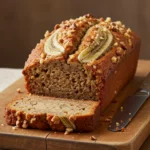Discover the art of making homemade ramen noodles right in your kitchen. This simple yet satisfying recipe allows you to craft delicious noodles with just a few ingredients. Whether you’re a seasoned cook or a culinary novice, this guide will walk you through each step, ensuring a delightful and successful cooking experience.
Ingredients for Homemade Ramen Noodles
Creating your own ramen noodles is not only rewarding but also allows you to enjoy a fresher taste compared to store-bought options. Here’s what you’ll need:
- 2 cups all-purpose flour
- 1/2 tsp salt
- 1/2 tsp baking soda
- 2/3 cup water
- Cornstarch for dusting
Instructions: Step-by-Step Guide to Perfect Ramen Noodles
Follow these simple steps to create your very own homemade ramen noodles:
- Mix Dry Ingredients: In a large bowl, combine the flour, salt, and baking soda. Ensure they are well-mixed for even distribution of the baking soda and salt.
- Add Water Gradually: Slowly pour in the water, stirring continuously, until a dough begins to form. The dough should be slightly sticky but manageable.
- Knead the Dough: Transfer the dough onto a floured surface. Knead it for about 5 minutes until it becomes smooth and elastic. This develops the gluten, which gives the noodles their characteristic chewiness.
- Rest the Dough: Wrap the dough in plastic wrap and let it rest for 30 minutes at room temperature. This resting period allows the flour to fully hydrate and the gluten to relax, making it easier to roll out.
- Roll and Cut the Dough: After resting, roll the dough out as thin as possible. Use a sharp knife or a pasta cutter to slice it into thin strips. The thickness and width are up to preference, but traditionally, ramen noodles are about 1/8-inch wide.
- Dust with Cornstarch: Lightly dust the noodles with cornstarch to prevent them from sticking together. This step is crucial if you’re not cooking them immediately.
- Cook the Noodles: Bring a large pot of water to a rolling boil. Add the noodles and cook for 3-4 minutes. They should be tender yet firm to the bite. Drain and rinse under cold water to stop the cooking process.
Nutrition Facts
Understanding the nutritional content of your homemade ramen noodles can help you make informed dietary choices. Here’s a breakdown:
- Calories: 200 per serving
- Carbohydrates: 40g
- Protein: 6g
- Fat: 1g
- Fiber: 2g
These homemade noodles are a healthier alternative to packaged options, offering fewer preservatives and additives.
How to Serve Homemade Ramen Noodles
Once your homemade ramen noodles are ready, the possibilities for delicious and satisfying meals are virtually endless. Here are a few serving suggestions, each designed to elevate your homemade noodles into an extraordinary dining experience:
Classic Ramen Bowl
To create a classic ramen bowl, start by preparing a rich and flavorful broth as the base. You can choose from various types of broth, including:
- Shoyu (Soy Sauce Broth): A savory broth made with soy sauce, mirin, and dashi. Its umami flavor pairs beautifully with chicken or pork.
- Miso Broth: A hearty and rich broth made with miso paste, which adds depth and a slightly sweet flavor. This is a fantastic option for those who prefer a vegetarian or vegan alternative.
- Tonkotsu (Pork Bone Broth): A creamy, indulgent broth made by simmering pork bones for hours, resulting in a luscious texture and deep flavor.
Once you have your broth simmering away, add your freshly cooked noodles directly into the bowl to allow them to soak up the flavors of the broth. For a truly authentic experience, consider topping your ramen with:
- Chashu Pork: Thinly sliced braised pork belly, marinated in a soy sauce mixture, which adds richness and a melt-in-your-mouth texture.
- Soft-Boiled Egg: Cooked to perfection with a runny yolk, the soft-boiled egg adds creaminess that complements the broth beautifully. To achieve the perfect soft-boiled egg, simmer for about 6-7 minutes, then plunge it into an ice bath before peeling.
- Scallions (Green Onions): Sliced scallions add a fresh, crisp bite that enhances the overall flavor profile.
- Bamboo Shoots: These tender shoots provide a unique texture and a slight crunch, often found in traditional ramen dishes.
- Nori (Seaweed): A sheet of nori adds a hint of ocean flavor and a touch of elegance to your ramen bowl.
- Menma (Fermented Bamboo Shoots): These add a distinct umami flavor and a delightful chewiness.
Feel free to get creative with your toppings—bean sprouts, corn, mushrooms, and even spicy chili oil can all add unique flavors and textures to your ramen bowl.
Stir-Fry
For a quick and satisfying meal, consider tossing your cooked ramen noodles in a stir-fry. This method is versatile and allows you to use whatever ingredients you have on hand. Here’s how to create a delectable stir-fry with your noodles:
- Prepare Your Ingredients: Slice your choice of protein—chicken, beef, shrimp, or tofu—into bite-sized pieces. Chop a variety of vegetables, such as bell peppers, carrots, snap peas, and broccoli.
- Heat Your Pan: Use a wok or a large skillet and heat some oil over medium-high heat. Sesame oil can add a nice flavor, or you can use vegetable oil if you prefer.
- Cook the Protein: Add your protein to the hot pan and sauté it until cooked through. If using tofu, ensure it’s crispy on the outside for added texture.
- Add the Vegetables: Toss in the chopped vegetables and stir-fry for a few minutes until they’re tender-crisp. You want to retain some crunch for a delightful bite.
- Add the Noodles: Once the vegetables are cooked, add your ramen noodles to the pan and toss everything together.
- Seasoning: Drizzle with soy sauce, oyster sauce, or teriyaki sauce for flavor. You can also add garlic, ginger, and chili flakes for an extra kick. Toss everything together until the noodles are heated through and well-coated with the sauce.
Serve your stir-fry hot, garnished with sesame seeds or chopped herbs for added flavor and presentation. This dish is perfect for a weeknight dinner when time is of the essence.
Cold Noodle Salad
For a refreshing twist, you can serve your homemade ramen noodles in a cold noodle salad. This dish is perfect for warm weather or as a light meal. Here’s how to prepare it:
- Prepare the Noodles: Once your noodles are cooked, rinse them under cold water to stop the cooking process and cool them down. This also helps remove excess starch, preventing them from becoming sticky.
- Create the Dressing: Whisk together a tangy dressing that can include ingredients like rice vinegar, soy sauce, sesame oil, and a touch of honey or sugar for sweetness. You can also add grated ginger, minced garlic, and chili sauce for a bit of heat.
- Mix in Fresh Vegetables: Toss your cooled ramen noodles in a large bowl with a variety of colorful, fresh vegetables. Consider using shredded carrots, cucumber, bell peppers, and snap peas for crunch and flavor. Add chopped herbs like cilantro or mint for a fresh finish.
- Protein Options: If desired, add protein to your salad. Grilled chicken, shrimp, or tofu can all be excellent choices that enhance the dish’s heartiness.
- Toss and Serve: Drizzle the dressing over the salad and toss everything together until well combined. Serve chilled, garnished with toasted sesame seeds or sliced green onions for added texture and flavor.
This cold noodle salad is not only delicious but also highly customizable—feel free to experiment with different vegetables, proteins, and dressings to suit your palate.
Conclusion
Whether you opt for a classic ramen bowl, a vibrant stir-fry, or a refreshing cold noodle salad, your homemade ramen noodles can shine in a variety of dishes. The key is to balance flavors and textures, using fresh ingredients and aromatic toppings to create a meal that is as satisfying as it is delicious. Enjoy the creativity and versatility of your homemade ramen noodles, and don’t hesitate to experiment with new combinations to find your favorite way to serve them!
Additional Tips for Perfect Ramen Noodles
Enhancing your ramen-making journey can transform a simple bowl of noodles into an extraordinary culinary experience. Here are some comprehensive tips to help you achieve the perfect ramen noodles:
Experiment with Flours
The type of flour you choose can significantly affect the texture and flavor of your ramen noodles. While all-purpose flour is a common choice due to its versatility, don’t hesitate to explore other options:
- Bread Flour: This flour has a higher protein content (around 12-14%) than all-purpose flour, which contributes to a chewier texture. The extra gluten formation during kneading gives the noodles a satisfying bite and helps them maintain their structure when cooked.
- Whole Wheat Flour: For a nuttier flavor and added nutritional benefits, consider using whole wheat flour. It can be used alone or mixed with other flours to create a unique flavor profile. Just keep in mind that whole wheat noodles may require more hydration, so adjust your water content accordingly.
- Specialty Flours: Don’t shy away from experimenting with other flours, such as semolina or even rice flour for gluten-free options. Each flour will impart its characteristics to the noodles, and combining them can lead to exciting new textures and flavors.
- Flavored Flours: For an added twist, consider incorporating flavored flours such as matcha for a vibrant green hue and earthy taste, or beetroot powder for a striking color and subtle sweetness. These additions can elevate the visual appeal and taste of your ramen.
Adjust Dough Consistency
The consistency of your dough is crucial for achieving the perfect noodle. Here are some tips to help you achieve the ideal texture:
- Too Dry?: If your dough feels dry and crumbly, it may lack sufficient moisture. Gradually add water, one teaspoon at a time, kneading thoroughly after each addition. Aim for a dough that is smooth and slightly tacky but still holds its shape.
- Too Sticky?: A sticky dough can be challenging to work with and may result in clumping during cooking. If you find your dough excessively sticky, sprinkle a small amount of flour over it and knead until the desired consistency is achieved. Remember, the goal is a pliable dough that doesn’t stick excessively to your hands or the work surface.
- Resting the Dough: After kneading, let the dough rest for at least 30 minutes, covered with a damp cloth or plastic wrap. This resting period allows the gluten to relax, making it easier to roll out and shape the noodles later on.
Use a Pasta Machine
A pasta machine can be a game-changer in the noodle-making process, offering precision and consistency that can be difficult to achieve by hand. Here’s how to utilize this tool effectively:
- Uniform Thickness: By using a pasta machine, you can roll your dough to an even thickness, which is key for ensuring that your noodles cook uniformly. Start with the widest setting to flatten the dough, gradually working your way down to thinner settings.
- Reducing Manual Strain: Hand-rolling dough can be labor-intensive, especially if you’re making large batches. A pasta machine significantly reduces the effort required, allowing you to produce noodles quickly and with less fatigue.
- Cutting Noodles: Many pasta machines come with attachments for cutting noodles into various shapes. You can achieve traditional ramen widths or experiment with different styles, such as udon or soba. This versatility allows you to tailor your noodles to suit specific recipes or personal preferences.
- Cleaning and Maintenance: After using the pasta machine, be sure to clean it thoroughly to prevent any dough residue from hardening. Use a soft brush or cloth to remove any bits of dough stuck in the rollers and cuttings. This will prolong the life of your machine and ensure optimal performance for future noodle-making sessions.
By implementing these tips, you can elevate your ramen-making skills and enjoy a more satisfying, authentic culinary experience. With practice, experimentation, and a little creativity, you’ll be well on your way to crafting the perfect bowl of ramen noodles that rivals those found in your favorite ramen shop.
FAQs
Q: Can I store the uncooked noodles?
A: Yes, you can store uncooked noodles by dusting them generously with cornstarch, then placing them in an airtight container in the fridge for up to 2 days or freeze them for longer storage.
Q: Can I use whole wheat flour?
A: Whole wheat flour can be used, but the texture will be denser and chewier. You may need to adjust the water content slightly.
Q: Why is baking soda used in the recipe?
A: Baking soda helps to mimic the alkaline quality of kansui, traditionally used in ramen noodles, giving them their distinctive flavor and color.
Conclusion
Making homemade ramen noodles is a gratifying endeavor that brings a taste of Japan into your kitchen. With a handful of ingredients and a little bit of effort, you can create a dish that is both delectable and versatile. Whether you enjoy them in a rich broth or as part of a stir-fry, these noodles are sure to impress. So, roll up your sleeves and embark on this delightful culinary journey. Happy cooking! 🍜
Print
Homemade Ramen Noodles Recipe
Ingredients
- 2 cups all-purpose flour
- 1/2 tsp salt
- 1/2 tsp baking soda
- 2/3 cup water
- Cornstarch for dusting
Instructions
- Mix Dry Ingredients: In a large bowl, combine the flour, salt, and baking soda. Ensure they are well-mixed for even distribution of the baking soda and salt.
- Add Water Gradually: Slowly pour in the water, stirring continuously, until a dough begins to form. The dough should be slightly sticky but manageable.
- Knead the Dough: Transfer the dough onto a floured surface. Knead it for about 5 minutes until it becomes smooth and elastic. This develops the gluten, which gives the noodles their characteristic chewiness.
- Rest the Dough: Wrap the dough in plastic wrap and let it rest for 30 minutes at room temperature. This resting period allows the flour to fully hydrate and the gluten to relax, making it easier to roll out.
- Roll and Cut the Dough: After resting, roll the dough out as thin as possible. Use a sharp knife or a pasta cutter to slice it into thin strips. The thickness and width are up to preference, but traditionally, ramen noodles are about 1/8-inch wide.
- Dust with Cornstarch: Lightly dust the noodles with cornstarch to prevent them from sticking together. This step is crucial if you’re not cooking them immediately.
- Cook the Noodles: Bring a large pot of water to a rolling boil. Add the noodles and cook for 3-4 minutes. They should be tender yet firm to the bite. Drain and rinse under cold water to stop the cooking process.
Nutrition
- Serving Size: One Normal Portion
- Calories: 200
- Fat: 1g
- Carbohydrates: 40g
- Fiber: 2g
- Protein: 6g




